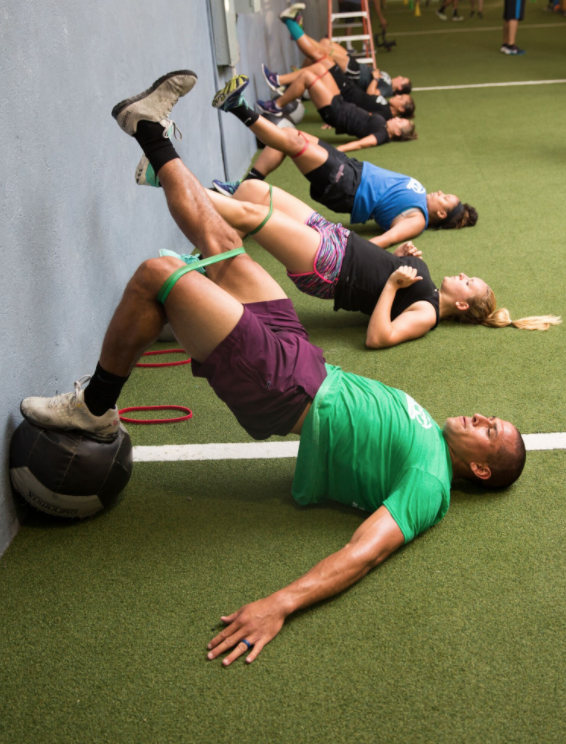Exercises Required to Provide Power

When training speed, the glutes and hamstrings are the primary muscles used to generate the force and power required for success. In order to get the most out of these muscles, athletes must learn to get full extension through the hips when they run. In this week’s chapter of the Athletes’ Acceleration Speed Training Digest we will look at the 4 premiere bridging exercises that will teach hip extension, increase hamstring and glute strength, reducing the likelihood of injuries to this area, as well as improve lower back stability and core strength.
With bridging, it’s important to use the glutes and hamstrings to raise the hips and not flex the lumbar spine. If you feel a lot of pressure in your lower back when performing these exercises, then you are most likely flexing the spine instead of firing the glutes and hamstrings, which are the muscles that you should be using to keep your hips up.
These exercises will progress from easy to difficult, so follow these exercises in order and focus on using proper form and technique.
Isometric Bridge
Lay on your back with your hands at your sides and palms facing down. Bend your legs so that your feet are flat on the ground.
Fire your glutes by driving your heels into the ground to raise your hips. Your hips should create a straight line from the knee through the hip and shoulder. Again, maintain this position by firing the glutes (driving the heels into the ground) and not flexing the lumbar spine. You should feel it mainly in your glutes and hamstrings, not your back. At the top point, draw in the abdominals (pull your belly button toward your spine) and hold.
Do three sets of 30 second holds. If your legs fatigue and your hips drop before the 30 seconds, reduce each set to 15 seconds.
Single Leg Bridge
Do not attempt this exercise until you can consistently complete the Isometric Bridge for 3 sets of 30 seconds.
Start in the same position as the Isometric Bridge, except you are going to extend one leg off the ground, straight out in front of you. Fire the glute by driving the heel into the ground. Raise your hips so that you create a straight line from the knee to the hip and through the shoulder. Draw in your abdominals and hold this position by continuing to drive the foot down like your were trying to put a hole in the floor. Keep the outstretched leg in a stationary position.
Do three sets of 15 seconds with each leg. If your legs fatigue and your hips drop before the 15 seconds, reduce each set to 10 seconds.
The next two exercises progress to using a Physioball to aid in the bridging exercises. The use of a Physioball increases the difficulty of the exercise by requiring higher levels of balance and stabilization within glutes, hamstrings and hips
Stability Ball Bridge
Lie on your back with your feet on the ball, with the toes dorsiflexed. Fire the glutes by driving your heels into the ball. Raise your hips so that only your head, shoulders and arms are touching the floor. There should be a straight line from your ankles to your shoulders. Draw in the abdominals and hold this position.
Do three sets of 20 second holds. If your legs fatigue and your hips drop before the 20 seconds, reduce each set to 10 seconds.
Alternating Bridge
Do not attempt this exercise until you can consistently complete the Stability Ball Bridge for 3 sets of 20 seconds.
Follow the same procedure as the Stability Ball Bridge. Once your hips are elevated, lift one leg so that the heel is an inch or two above the opposite toe. Hold each lift for 2 seconds.
Do three sets of 10 2-second holds (5 each leg). If your legs fatigue and your hips drop before you complete the entire set, then reduce each set to a total of 6 2-second holds (3 each leg).
Recommended Athletes’ Acceleration Products
—————————————————————————–



0 Comments for “Exercises Required to Provide Power”